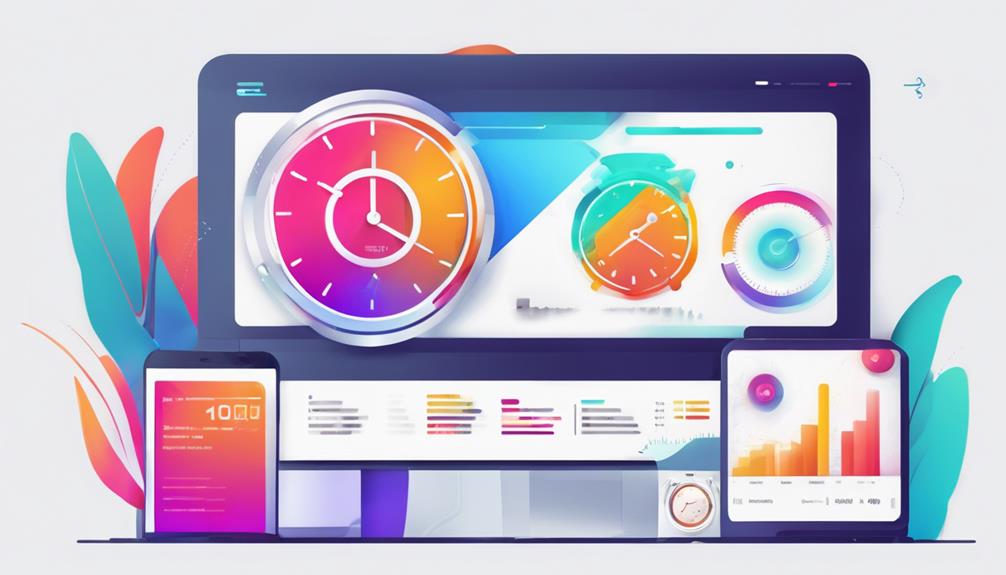You've probably heard about the importance of SEO, but have you ever considered how crucial image SEO practices are? They do more than just enhance the aesthetic appeal of your website; they play a vital role in improving load times and engaging users. With the right techniques, your images can not only captivate but also contribute significantly to your site's search visibility. By optimizing images, you can reduce bounce rates and make your content accessible to everyone. So, how exactly do these practices impact your site's performance and search rankings? Let's explore further.
Key Takeaways
- Optimized images improve site performance, enhancing user experience and search engine rankings.
- Proper image SEO practices boost page load speed, reducing bounce rates and improving user satisfaction.
- Effective alt text increases accessibility, aiding visually impaired users and improving search engine understanding.
- Image optimization enhances search visibility by integrating relevant keywords and improving indexing.
- Consistent image sizes and formats ensure visual appeal and efficiency, enhancing user engagement.
Importance of Image Optimization
When you optimize images on your website, you're not just enhancing aesthetics; you're boosting your site's performance and search visibility. Properly optimized images can significantly reduce page load times, which is crucial since 53% of mobile users abandon sites taking over three seconds to load.
Google uses page speed as a ranking factor, so faster sites tend to rank higher in search results, driving more organic traffic.
Image optimization also enhances search visibility through alt text. By using descriptive, keyword-focused alt attributes, you provide search engines with context about your images, improving your chances of appearing in image search results. This is particularly important as 22.6% of search queries lead to image results, offering an untapped opportunity for increased visibility.
Moreover, optimized images contribute to reduced bounce rates. Faster loading pages with relevant visuals keep users engaged, which can decrease bounce rates by up to 32%, according to recent studies.
Lower bounce rates signal to search engines that your content is valuable, potentially improving your rankings. Hence, prioritizing image optimization isn't merely an aesthetic choice; it's a strategic move to enhance SEO, boost traffic, and ensure your website performs at its best.
Enhancing User Experience
Optimizing images isn't just about SEO—it's also a vital component of enhancing user experience on your website. Users consistently prefer sites that present visually appealing, relevant images over those lacking engaging visuals. High-quality images can boost user engagement by 94%, according to studies.
By ensuring your images are optimized, you're directly improving the aesthetic appeal and accessibility of your site, making it more inviting for users.
When you provide clear, descriptive alt text, you enhance accessibility for users with visual impairments, aligning with data that shows accessible sites have 27% higher retention rates. Alt text isn't just for SEO; it ensures all users, regardless of ability, can fully experience your content.
Additionally, optimized images with proper alt attributes can reduce bounce rates, as users find the content more relevant and engaging.
Consistency in image sizes and formats across your site also plays a crucial role. It minimizes layout shifts and enhances the visual flow, which is crucial for maintaining user focus.
Improving Page Load Speed

Speed is a crucial factor impacting user satisfaction and search engine rankings. When your website loads quickly, users are more likely to stay, engage, and convert. Search engines like Google consider page load speed a ranking factor, making it vital for you to optimize images effectively. Large, unoptimized images can drastically slow down your site. By compressing images and choosing the right formats, you can significantly improve load times.
Here's a quick overview of image optimization techniques to boost speed:
| Technique | Benefit | Implementation Tool |
|---|---|---|
| Image Compression | Reduces file size | TinyPNG, JPEGmini |
| Proper Formats | Optimizes quality and speed | WebP, SVG |
| Lazy Loading | Loads images as needed | LazySizes, Intersection Observer API |
| Responsive Images | Adapts to device size | Srcset, HTML5 |
Utilizing Alt Text Effectively
One of the crucial elements in image SEO is the proper use of alt text, which enhances accessibility and helps search engines understand your content. By incorporating descriptive, keyword-focused alt text, you ensure that your images contribute to your site's overall SEO strategy.
Alt text serves as a textual alternative for screen readers, making your content accessible to users with visual impairments, while also providing context to search engine crawlers. According to recent data, pages with optimized alt text can achieve up to 20% more organic visibility.
To utilize alt text effectively, focus on crafting concise, descriptive phrases that naturally incorporate primary keywords. Avoid keyword stuffing, as this can lead to penalties from search engines. Instead, analyze your keywords and select the most relevant terms that align with the image's context.
For instance, if your image depicts a "golden retriever playing in a park," your alt text might read, "Golden retriever playing fetch in a sunny park."
Ensure each image on your site has unique alt text, preventing redundancy and improving SEO effectiveness. Regularly audit your alt text to align with evolving keyword trends, ensuring your content remains competitive and accessible.
Boosting Search Visibility

Enhancing search visibility requires a strategic approach that combines data-driven analysis and keyword-focused content. To boost your visibility, start by conducting keyword research to identify terms your audience uses. Tools like Google Keyword Planner can help you pinpoint these keywords.
Once you've got a list, integrate these keywords naturally into your image file names, alt text, and surrounding content. This ensures search engines understand your content's relevance.
Next, focus on optimizing image size and format. Large images slow down your site, impacting user experience and search rankings. Use tools like TinyPNG or ImageOptim to compress images without losing quality.
Also, choose the right format—JPEG for photographs and PNG for graphics with fewer colors. This optimization boosts site speed, a factor Google uses to rank pages.
Lastly, create an image sitemap to help search engines index your images effectively. Include image metadata in your sitemap, providing search engines with more context.
This data-driven step enhances your site's crawlability, increasing the chances of your images appearing in search results. By implementing these image SEO practices, you'll improve your site's search visibility and attract more organic traffic.
Conclusion
Incorporating image SEO practices is crucial for boosting your site's performance and visibility. By optimizing images, you enhance user experience, improve page load speed, and reduce bounce rates. Utilizing descriptive alt text not only aids accessibility but also elevates your search rankings, driving more organic traffic. Remember, visually appealing images increase user interaction by 94%, making them a powerful tool in your SEO strategy. Invest in image optimization to gain a competitive edge in search results.


Leave a Reply